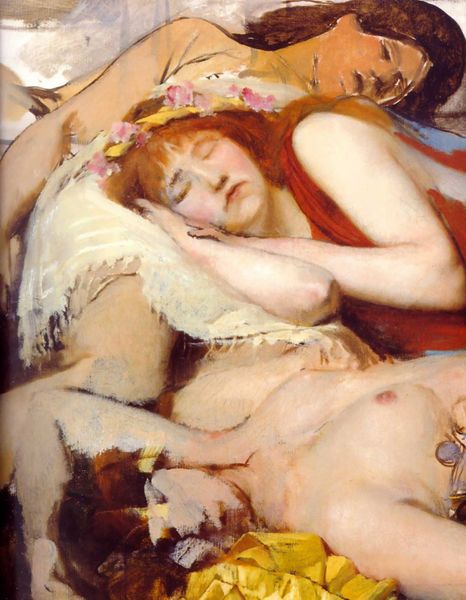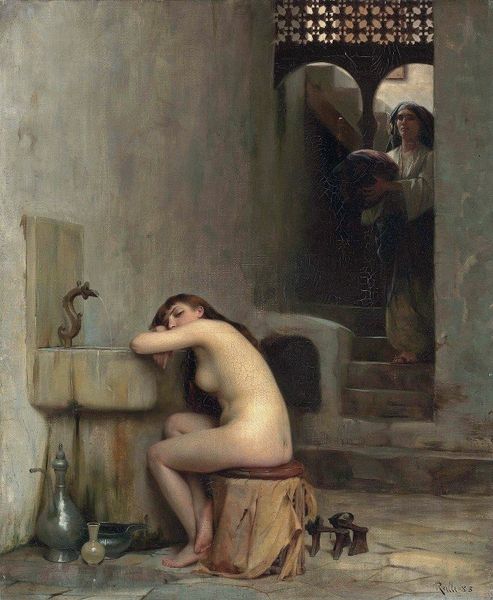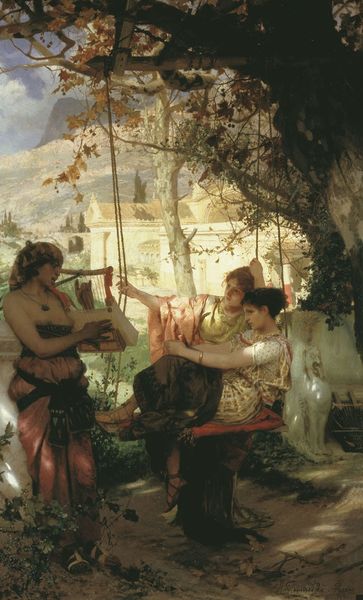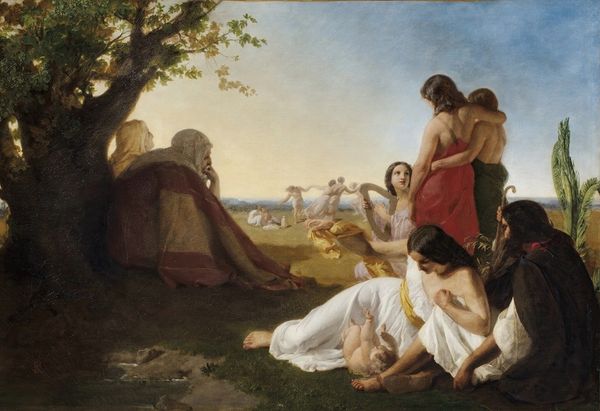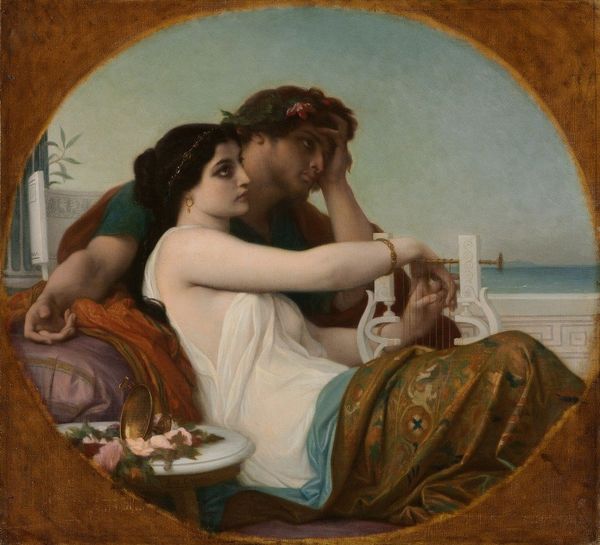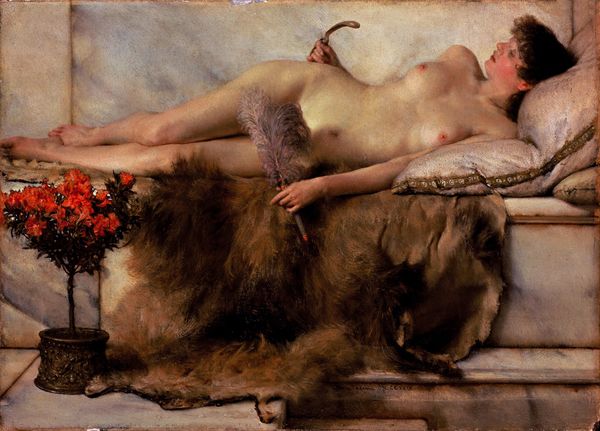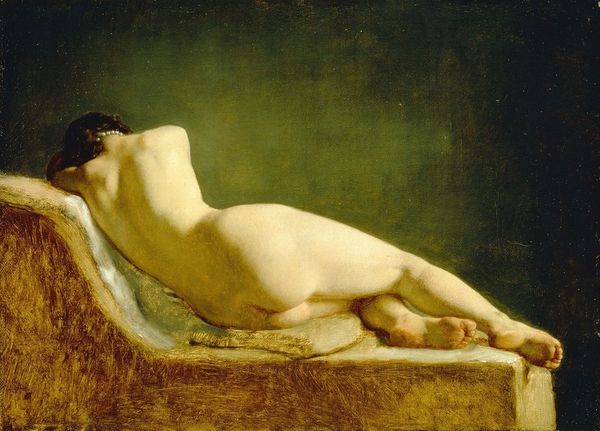
#
figurative
#
cosplay
#
possibly oil pastel
#
muted smudged
#
underpainting
#
pastel chalk drawing
#
veil as a decoration
#
bubble style
#
painting painterly
#
abstract character
#
watercolor
Copyright: Public Domain: Artvee
Curator: This is "La Siesta O Escena Pompeyana" by Lawrence Alma-Tadema. Editor: It's utterly decadent, isn’t it? Look at that languid atmosphere and those meticulously rendered fabrics. It oozes classical luxury. Curator: Absolutely. Alma-Tadema was renowned for his obsession with detail and creating immersive historical scenes. He used architectural elements and carefully researched costumes. Here, three figures recline amidst lavish objects. Consider how the arrangement directs our focus: starting with the flute-player on the left, the eye glides to the central figure, and concludes at the pondering older man on the right. Editor: Though, isn't it all a little…staged? There's no depth beyond the presentation of wealth and privilege. These aren't Romans—they are Victorians fantasizing about a hedonistic past. The women, especially, are aesthetic objects performing a role for male consumption. Curator: I understand your critique. However, his rendering of light and texture are quite captivating. The sheen of the bronze objects, the intricate mosaic table, the play of light across the marble floor - they contribute to the image's appeal and technical achievement. Notice how the palette unifies and controls our interpretation of both space and depth. Editor: True, Alma-Tadema mastered those skills but, looking at it from our contemporary lens, I cannot ignore the imperialistic undertones, which reveal the artist’s problematic obsession with a constructed classical purity to legitimize power structures of the British Empire. Curator: A fair point, and those nuances should certainly be discussed, but it’s also worth recognizing his place in the academic tradition and the skills through which he translated the source into an engaging painting. Editor: Ultimately, its appeal lies in its aesthetic construction but the question remains—whose fantasy are we observing, and at whose expense?
Comments
No comments
Be the first to comment and join the conversation on the ultimate creative platform.


